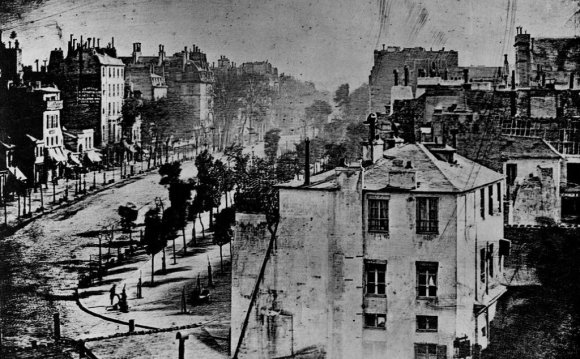
 To help you get some inspiration for landscape photo needed to enter, we’ve taken a look at this particular genre’s story. You probably won’t be surprised to discover, landscapes and photography share a long history. In fact, landscapes are some of the first ever subjects of any photograph. (Particularly if your definition of a landscape includes cityscapes.)
To help you get some inspiration for landscape photo needed to enter, we’ve taken a look at this particular genre’s story. You probably won’t be surprised to discover, landscapes and photography share a long history. In fact, landscapes are some of the first ever subjects of any photograph. (Particularly if your definition of a landscape includes cityscapes.)
Drawn Out Exposures
Back in 1826 when Joseph Nicéphore Niépce took what is widely regarded as being the first photograph, the exposure time for his image was an astonishing eight hours! Jump forward a further 12 years, to 1838, and Louis-Jacques-Mandé Daguerre took the first photographic image of a human being. However, even Daguerre’s historic photograph was more by chance than design; ‘Boulevard de Temple’ is a long range shot of a Parisian street scene and just happened to catch a man having his shoes shined. Since the photograph had a ten minute exposure time, only this man who was standing still was captured on the plate. All other movement was blurred into invisibility.
So, this early technical restraint of very long exposure times meant that photographers mostly had to work with static subjects and cityscapes and landscapes were two obvious examples.
Impressionistic Photography
However, one problem the early photographers encountered was that many people saw photography as a simple mechanical device and not an art form. This was also added to by the arrival of the ‘affordable’ hand held Kodak cameras. Now, almost anyone could be a ‘photographer’. This lead many photographers into developing a manipulated style of imagery known as ‘Pictorialism’. Pictorialist photos were often intentionally blurry (read impressionistic) and deliberately labour intensive. The idea was to show that artistic expression rose above the mechanical process.
 It’s in the Details!
It’s in the Details!
However, it wasn’t all fuzzy edges and dreamy viewpoints. In Cincinnati in 1848, two photographers, Charles Fontayne and William S. Porter were capturing astonishing levels of detail in their panoramic Daguerreotypes of the towns’ waterfront. These eight 6.5” by 8.5” images have recently been digitally restored demonstrating amazing levels of detail.
Heroic Landscapes
Into the 20th century and the most famous landscape photographers have predominantly come from the USA. Perhaps this is due to the growing influence of American cultural produce, the frontier myths and their dominant place in cinema that has helped promote the idea of the power and mystery of the American landscape.
At the top of the tree, so to speak, is the legendary Ansel Adams (1902 -1984). Adams was deeply concerned with the natural world and as well as it being the subject of his work, he was a dedicated environmentalist who encouraged people to take care of their planet. He worked mainly in black and white and captured the American West in stunning and dramatic imagery.
Abstracting Nature
Inevitably, photography always has part of its existence defined by painting and as Modernism arrived in architecture and the ‘fine arts’, so it also influenced photography. The composition and depths of field in landscape photography – such as those by Edward Weston (1886 – 1958) – can be seen to reflect abstract painting.
Life Through a Lens. And a Window
The John Simon Guggenheim Memorial Foundation (added to the post War boom and the availability of cars) also helped many photographers explore their native landscapes. Everyone from Garry Winogrand to Robert Frank to Stephen Shore and Lee Friedlander took off across America in their station wagons and documented their journeys.
Unlike the timeless almost painterly nature of earlier landscape photography, these artists treated the enormity of the world in front of them with a more snapshot viewpoint. In some cases this literally included showing the landscape through the car windshield or rear view mirror. The American landscape seen as one momentous drive-through movie!
As you can see, landscape photography has a beautiful history. If you’d like to make your mark on it, why not enter our Photograph for Nokia in Puerto Rico Competition? The competition closes at 10am on October 10, so you’ve still got plenty of time to heading to Talenthouse to upload your entry.
YOU MIGHT ALSO LIKE










